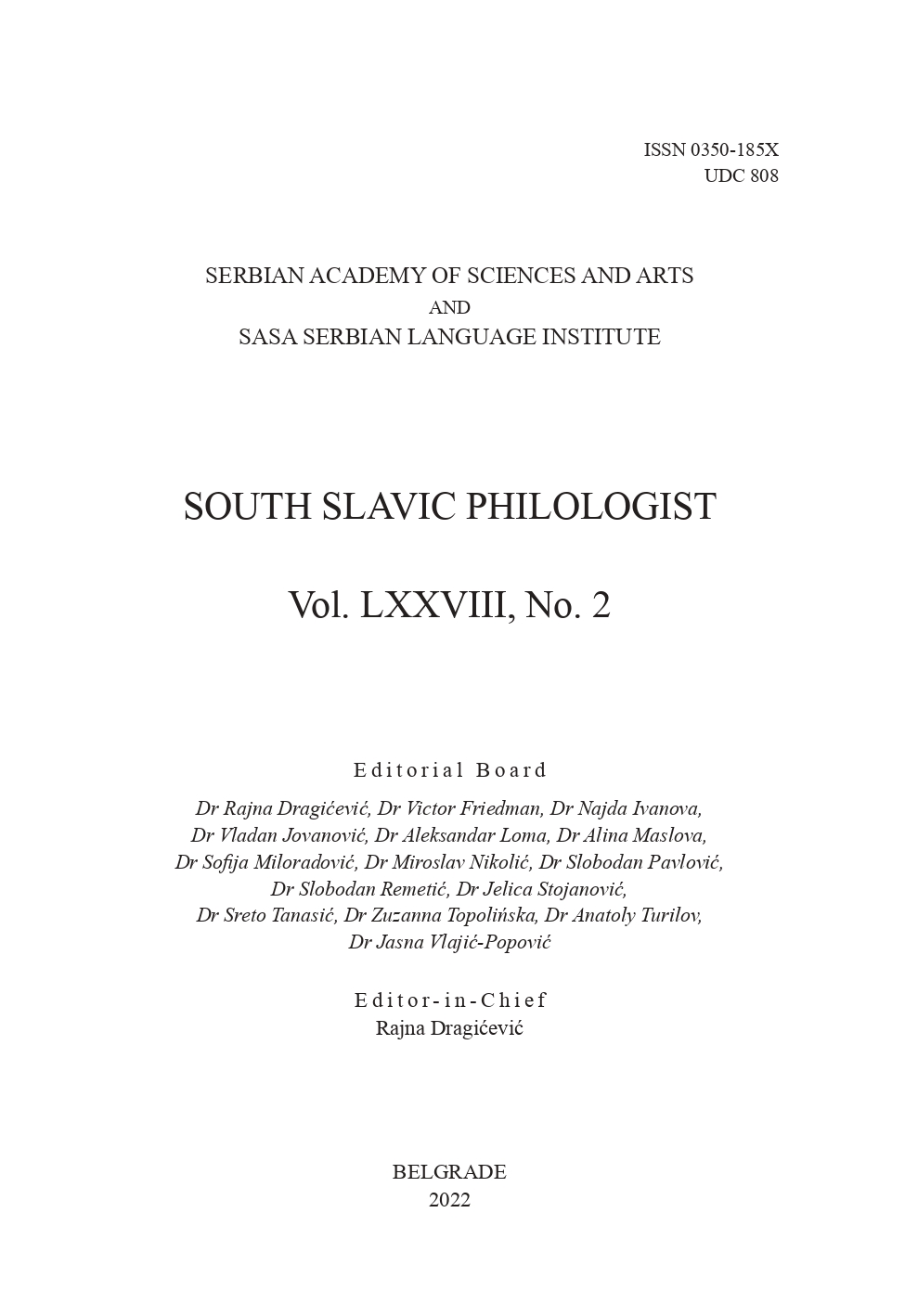ЈЕЗИК РАЧУНСКОГ ДНЕВНИКА ХРАМА СВЕТИХ АПОСТОЛА ПЕТРА И ПАВЛА У АРАДУ (1728−1752) – ФОНОЛОШКЕ ОСОБИНЕ
THE LANGUAGE OF THE ACCOUNTING LEDGER JOURNAL OF THE CHURCH OF THE HOLY APOSTLES PETER AND PAUL IN ARAD (1728‒1752) PHONOLOGICAL FEATURES
Author(s): Isidora G. BjelakovićSubject(s): Phonetics / Phonology, Historical Linguistics
Published by: Институт за српски језик Српске академије наука и уметности
Keywords: Serbian language; eighteenth century; Arad
Summary/Abstract: The paper analyzes certain phonological characteristics of the Accounting Ledger Journal of the Church of the Holy Apostles Peter and Paul, the document that has been kept under this name in the said church in Arad (under the signature INV 794). The document contains two protocols: the first one that was kept from 1728 until 1782 and the second one kept from 1776 until 1790. This paper analyzes the corpus from the first half of the 18th century (more precisely, the time period from 1728 until 1752). Since this is a text that encompasses two periods on the timeline: (1) the period in which Russian-Slavonic substituted Serbian-Slavonic and (2) the period in which Slavonic-Serbian was established and in which it existed – the basic task of this research is the identification of the language in which the Accounting Ledger Journal was written. In the paper, special attention is paid to the relation between vernacular and literary elements in the analyzed document, as well as to the dependence of their use on various contextual parameters. The analysis of the selected phonological characteristics of the Accounting Ledger Journal of the Church of the Holy Apostles Peter and Paul (1728–1752) indicates the chronological matching with the data from previous research of documents with a similar profile on the territory of South Hungary. The fourth and fifth decade is, in fact, the time that saw a more prominent penetration of Russian-Slavonic elements into manuscripts. Their number, however, is not large enough to regard it as a mixed language. The Accounting Ledger Journal as a whole still had a vernacular basis, which confirms the previous assumption concerning the elitization of folk language as the basic model for creating the Slavonic-Serbian language in the manuscripts of the 18th century. The analysis also shows that literary features (Serbian-Slavonic and Russian-Slavonic) were conditioned primarily by the thematic and structural organization of the text, as well as the social stratification of the people mentioned in the aforementioned document.
Journal: Јужнословенски филолог
- Issue Year: 78/2022
- Issue No: 2
- Page Range: 287-302
- Page Count: 16
- Language: Serbian

